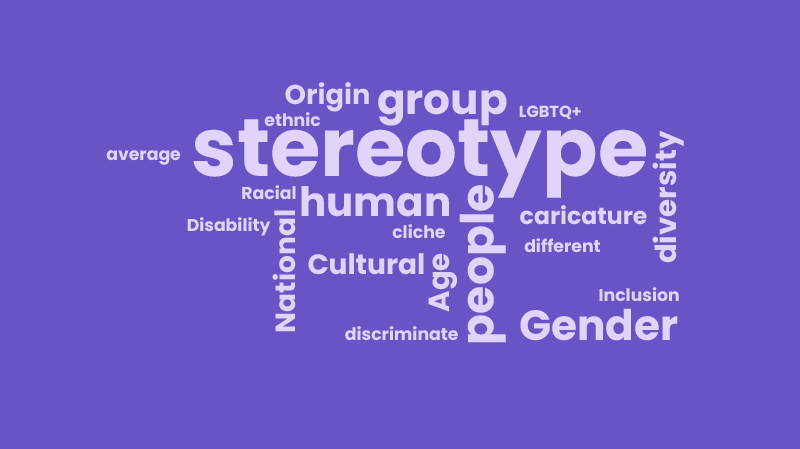Understanding Workplace Stereotypes
What Are Stereotypes?
Stereotypes are oversimplified beliefs or generalized perceptions about a group of people. They can be based on various characteristics, including race, gender, age, sexual orientation, and more. While some stereotypes may seem harmless, they can lead to significant negative consequences in the workplace, such as discrimination, prejudice, and a toxic work environment.
The Impact of Stereotypes in the Workplace
Stereotypes can have profound effects on employee morale, productivity, and overall workplace culture. Here are some of the key impacts:
- Reduced Employee Morale: Employees who feel stereotyped may experience decreased job satisfaction and motivation.
- Increased Turnover: A workplace that perpetuates stereotypes can lead to higher turnover rates as employees seek environments where they feel valued and respected.
- Impaired Collaboration: Stereotypes can create divisions among employees, hindering teamwork and collaboration.
- Limited Opportunities: Stereotyping can result in biased hiring, promotions, and evaluations, limiting opportunities for underrepresented groups.
Common Types of Workplace Stereotypes
- Gender Stereotypes: Assumptions about roles based on gender, such as believing women are less capable in leadership positions.
- Age Stereotypes: Misconceptions about employees based on their age, such as older workers being resistant to change or younger workers lacking experience.
- Cultural and Ethnic Stereotypes: Generalizations about individuals based on their cultural or ethnic backgrounds, which can lead to exclusion or bias.
- Disability Stereotypes: Beliefs that individuals with disabilities are less capable or require constant assistance.
- Sexual Orientation Stereotypes: Assumptions about behavior or abilities based on an individual’s sexual orientation.
Strategies for Combating Stereotypes in the Workplace
To effectively combat stereotypes, organizations must adopt a multifaceted approach. Here are several strategies that can help:
1. Education and Awareness
Training Programs: Implement training sessions that address unconscious bias and the impact of stereotypes. These programs should engage employees at all levels and promote empathy and understanding.Workshops: Organize workshops that focus on diversity and inclusion, allowing employees to share their experiences and learn from one another.
2. Promote Diversity and Inclusion
Diverse Hiring Practices: Embrace diverse hiring practices to ensure a wide range of perspectives and experiences within the organization. This can include using blind resume screening and diverse interview panels.Inclusive Culture: Foster a culture that values diversity and inclusion by recognizing and celebrating the unique contributions of all employees.
3. Lead by Example
Leadership Commitment: Leaders should model inclusive behavior and challenge stereotypes within their teams. By setting a positive example, they can influence the organizational culture.Accountability: Hold individuals accountable for their actions and behaviors that perpetuate stereotypes. Establish clear consequences for discriminatory behavior.
4. Encourage Open Communication
Safe Spaces: Create an environment where employees feel safe to share their experiences and perspectives without fear of judgment.Constructive Feedback: Encourage constructive feedback and actively listen to the concerns of marginalized groups.
5. Implement Fair Policies and Practices
Policy Review: Regularly review and revise organizational policies to ensure they are free from bias and promote equal opportunities for all employees.Transparent Evaluation: Implement transparent performance evaluation processes that focus on objective criteria rather than subjective judgments.
6. Provide Mentorship and Support
Mentorship Programs: Pair employees from underrepresented groups with mentors who can provide guidance, support, and advocacy.Support Networks: Establish employee resource groups and affinity networks to create a sense of community and support.
7. Celebrate Diversity
Recognition Programs: Recognize and celebrate the achievements of individuals from diverse backgrounds to reinforce the value of diversity in the workplace.Cultural Events: Organize events that highlight different cultures and traditions, fostering appreciation and understanding among employees.
8. Regularly Assess Progress
Feedback Mechanisms: Continuously monitor and evaluate the organization’s progress in breaking stereotypes and fostering diversity and inclusion.Adjustments: Solicit feedback from employees and make necessary adjustments to further promote a culture of equity and respect.
FAQ Section
Q1: What are the main types of workplace stereotypes?A1: Common types of workplace stereotypes include gender stereotypes, age stereotypes, cultural and ethnic stereotypes, disability stereotypes, and sexual orientation stereotypes.
Q2: How can organizations promote diversity and inclusion?A2: Organizations can promote diversity and inclusion by implementing diverse hiring practices, fostering an inclusive culture, providing training programs, and celebrating diversity through recognition and cultural events.
Q3: What role do leaders play in combating stereotypes?A3: Leaders play a crucial role by modeling inclusive behavior, holding individuals accountable for discriminatory actions, and promoting a culture of respect and equity.
Q4: How can employees address stereotypes they encounter?A4: Employees can address stereotypes by speaking up when they witness biased behavior, engaging in open dialogue, and reporting incidents to HR or relevant authorities.
Q5: What are the consequences of workplace stereotypes?A5: Workplace stereotypes can lead to reduced employee morale, increased turnover, impaired collaboration, and limited opportunities for underrepresented groups.
Conclusion
Combating stereotypes in the workplace is a critical endeavor that requires a concerted effort from all levels of an organization. By implementing effective strategies, promoting diversity and inclusion, and fostering open communication, organizations can create a more equitable and supportive work environment. This not only benefits individual employees but also enhances overall organizational performance and culture.
Comparison Table of Strategies to Combat Stereotypes
| Strategy | Description | Importance |
|---|---|---|
| Education and Awareness | Training programs to raise awareness about unconscious bias and stereotypes. | Builds understanding and empathy. |
| Promote Diversity and Inclusion | Diverse hiring practices and an inclusive culture. | Ensures varied perspectives. |
| Lead by Example | Leaders model inclusive behavior and challenge stereotypes. | Sets the tone for the organization. |
| Encourage Open Communication | Create safe spaces for dialogue and feedback. | Fosters trust and understanding. |
| Implement Fair Policies | Regularly review policies to eliminate bias. | Promotes equal opportunities. |
| Provide Mentorship and Support | Establish mentorship programs for underrepresented groups. | Supports career advancement. |
| Celebrate Diversity | Recognize and celebrate diverse contributions. | Reinforces the value of diversity. |
| Regularly Assess Progress | Continuously monitor and evaluate diversity initiatives. | Ensures accountability and improvement. |
For more information on workplace diversity and inclusion, you can visit the U.S. Equal Employment Opportunity Commission.



